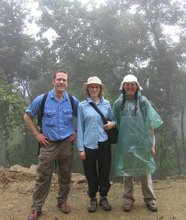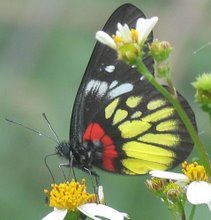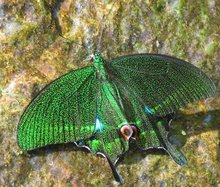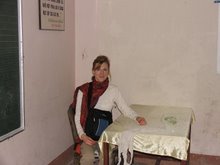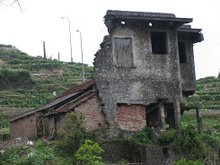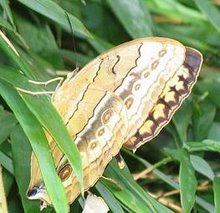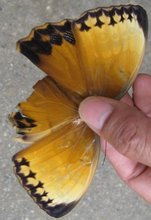With the guidance of our kindergarten teacher, I was able to get everything I needed, including the caterpillars, a flight cage, food, and a well-filmed and informative nine minute video on the metamorphosis. Each student has claimed and named one caterpillar, which arrived April 11th. Since then these caterpillars have grown rapidly, living on a paste of a plant called malva and vitamins that students spread on the bottom of small plastic container cages. Every morning my students look for evidence of molting and signs that their caterpillars are beginning to form into a “J”, that indicates they are starting to make a chrysalis. I’m guessing that Monday morning we’ll see some beginning chrysalis formations. Once that has occurred, it takes about ten days for the butterfly to emerge. Sounds like a fun unit? It is, unless you believe that what I’m doing is hurting the environment and endangering the local butterfly population.
Some entomologists (scientists who study insects) and the North American Butterfly Association believe that releasing farm raised butterflies such as our painted ladies into the wild is detrimental to our environment. In a nutshell, here are their concerns:
The farm raised butterflies might carry diseases that could be spread to the wild local butterflies when released
- The farm raised butterflies could interbreed with wild butterflies, causing genetic deterioration. This means that the “blueprints” for future butterflies could be damaged, so that they won’t have all the necessary characteristics needed to lead normal healthy butterfly lives
- These farm raised butterflies might not be naturally found in my local area, and by releasing them they might eat the food that the native butterflies need to survive
- Some people, including teachers, don’t treat the butterflies with care and respect, and may cause them to suffer and die prematurely. One example of this is a teacher who has her students release farm raised butterflies in the middle of a snowy winter, when they have no chance of finding food.
- Teachers aren’t the only ones purchasing butterfly larvae. Many are purchased by people who release them at special events such as weddings, and those people may pay up to ten dollars for one butterfly. Because the butterflies are worth so much money, some people have started capturing and selling wild butterflies (poaching), and this could cause some butterflies to become endangered.
All of the concerns above are reasonable and should be considered before purchasing farm raised caterpillars. However, there are a few facts that need to be mentioned. According to Professor of natural sciences and humanities at the University of Wyoming and author of the book “Locust” Jeffrey A. Lockwood says that no one has been able to prove that there has been harm to the environment by releasing farm and classroom raised butterflies. As to the concern that butterflies might be released in areas where they cannot find food or that might not be suitable for them to survive, the United States Department of Agriculture only allows butterfly larvae to be shipped to states that have appropriate habitat for that type of butterfly. The International Butterfly Breeders Association’s web page provides many links to research showing no detrimental effects of releasing farmed butterflies. There is one way to address the concerns raised is by continuing to raise them in classrooms but not release them into the wild. Instead, it has been suggested that teachers simply “put them in a freezer” to end their lives after students have watched them flutter around for a week or two.
What do you think? Should teachers continue to be allowed to have their students raise and release painted ladies, or should the process be banned as being too risky to the wild butterfly populations? What do you think of the freezing idea? How would you feel if I froze (and thus killed) your butterfly? Would freezing them teach students respect and kindness or cruelty? Do you think the benefits of raising and releasing butterflies is worth the risk? Tell me what you think!
